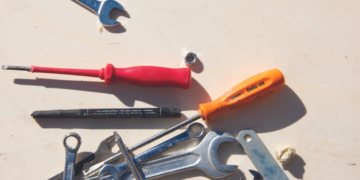When you spend enough time working, you start to get a sense of the dark little secrets an industry can have.
And sure, this can involve the creepy aspects of a job that still need to be done, but it’s more likely that you’ve come across something that your bosses simply wouldn’t want to see the light of day.
But of course, the bigger an industry is, the more likely that someone along the line will leak those secrets into the public eye. And while consumers are the most immediately concerned when they’re being sold something unsafe or simply ripped off, it can also be disturbing for them to learn that the purchases they take for granted are supporting a company that severely exploits its workers.
Unfortunately, there are no shortage of industries where this is a widespread problem, but it’s been revealed as an uncomfortable reality of the modern fashion industry (particularly when it comes to ” fast fashion “) for over 30 years at this point.
But while that’s both well-known and easy to forget, one TikTok shares some surprising signs to help us spot when a garment was made unethically.
On February 5, TikTok user @seatrick shared how much a cozy looking crochet sweater can tell us about the ethics of fashion.

Specifically, they’re talking about pieces like this that are available from Target for about $35.
As they said, “Anyone who’s ever tried to knit or crochet anything is gasping at that price.”
And while the company doesn’t advertise this product as hand-crocheted, they explained why any other possibility was extremely unlikely.
Although knitting machines exist and some of them can make passable replications of crocheted work, one detail stuck out to @seatrick that proved such a machine wasn’t used here.

They said the “granny squares” that are both evident in that sweater’s design and promoted in the product’s description can’t be done by machines, so the sweater could have only been made by hand.
And considering that the sweater is 100% cotton (which is a natural material and therefore more expensive) and that it was “imported,” this made it unlikely that whoever crocheted these garments was paid even remotely well for doing so.
Citing the work of another TikToker named @mattrose1312, @seatrick figured that the maximum wage a worker could possibly make for this was $1.40 an hour.

That was because a single granny square takes about 17 minutes for an experienced crocheter, which means a garment that uses them as a central pattern would likely take about 17 hours to produce.
Worse yet, these calculated rates only account for the cost of the materials and labor and since Target would need to factor far more than that into a sale price, it’s likely that someone made well under a dollar an hour to crochet this.
As @seatrick put it, “There is no humanly wage that can cover the price of this.”
With all of that in mind, it’s hard to imagine how these crochet sweaters could have been made anywhere but in a sweatshop.
And of course, we can see from their video that this is hardly unique to Target as just about any fast fashion brand you can name uses similar practices to keep their prices relatively low.
Because those prices and the techniques behind them are so ubiquitous, it’s hard to even think about them anymore as most of us aren’t used to paying ethical prices for handmade clothes and many may not be even able to afford them.
Yet as they said, “The reality is, people are exploited to be able to get clothing that’s this affordable.”


















































